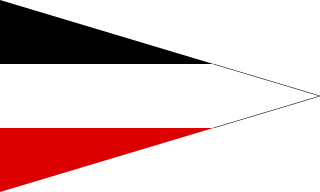This is the Korean War order of battle. Subsidiary commands are listed on sub-pages. Where no date is shown for a command, assume it present at the start of the war, on June 25, 1950.
The order of battle for the Battle of France details the hierarchy of the major combatant forces in the Battle of France in May 1940.
The following is the order of battle of the forces involved in the Battle of Shanghai, during the opening stages of the Second Sino-Japanese War.
The following units of the German First Army and British Expeditionary Force fought in the Battle of Mons in World War I.
Order of battle for the Campaign of Northern and Eastern Honan 1938 during the Second Sino-Japanese War.
Shoulder sleeve insignia (SSI) are cloth emblems worn on the shoulders of US Army uniforms to identify the primary headquarters to which a soldier is assigned. The SSI of some army divisions have become known in popular culture.
This list of United States Army divisions is divided into three eras: 1911–1917, 1917–1941, and 1941–present. These eras represent the major evolutions of army division structure. The 1911–1917 era lists divisions raised during the Army's first attempts at modernizing the division, prior to the authorization of permanent divisions, and the 1917–1941 era lists the first permanent divisions, prior to advent of specialized divisions. The 1941–present era lists all of the divisions organized, raised, or authorized since then.
The following units and commanders fought in the Battle of Northern and Eastern Henan.
This is the order of battle for the Syria–Lebanon campaign, a World War II campaign between the Western Allies and Vichy France during June and July, 1941.
This is the order of battle for the First Battle of Ypres fought from 19 October to 22 November 1914 as one of the main engagements of the First World War. It was fought between mixed British Expeditionary Force, French eighth army and armies of the German Empire in northern France and Flanders.

This is the order of battle for the ground campaign in the Gulf War between U.S. and Coalition Forces and the Iraqi Armed Forces between February 24–28, 1991. The order that they are listed in are from west to east. Iraqi units that were not in the Kuwaiti Theater of Operations are excluded from this list. Some Iraqi divisions remained un-identified by Department of Defense intelligence and a number of the details of the Iraqi order of battle are in dispute among various authoritative sources.

The 4th Cavalry Division was a unit of the German Army in World War I. The division was formed on the mobilization of the German Army in August 1914. The division was disbanded in 1919 during the demobilization of the German Army after World War I.
The Order of battle, Keren 1941 shows Italian army forces that participated in the Battle of Keren from February to March 1941 and British troops in Sudan on 20 January 1941, which participated in military operations against Eritrea during the East African Campaign 1940–1941.
This page is based on this
Wikipedia article Text is available under the
CC BY-SA 4.0 license; additional terms may apply.
Images, videos and audio are available under their respective licenses.


